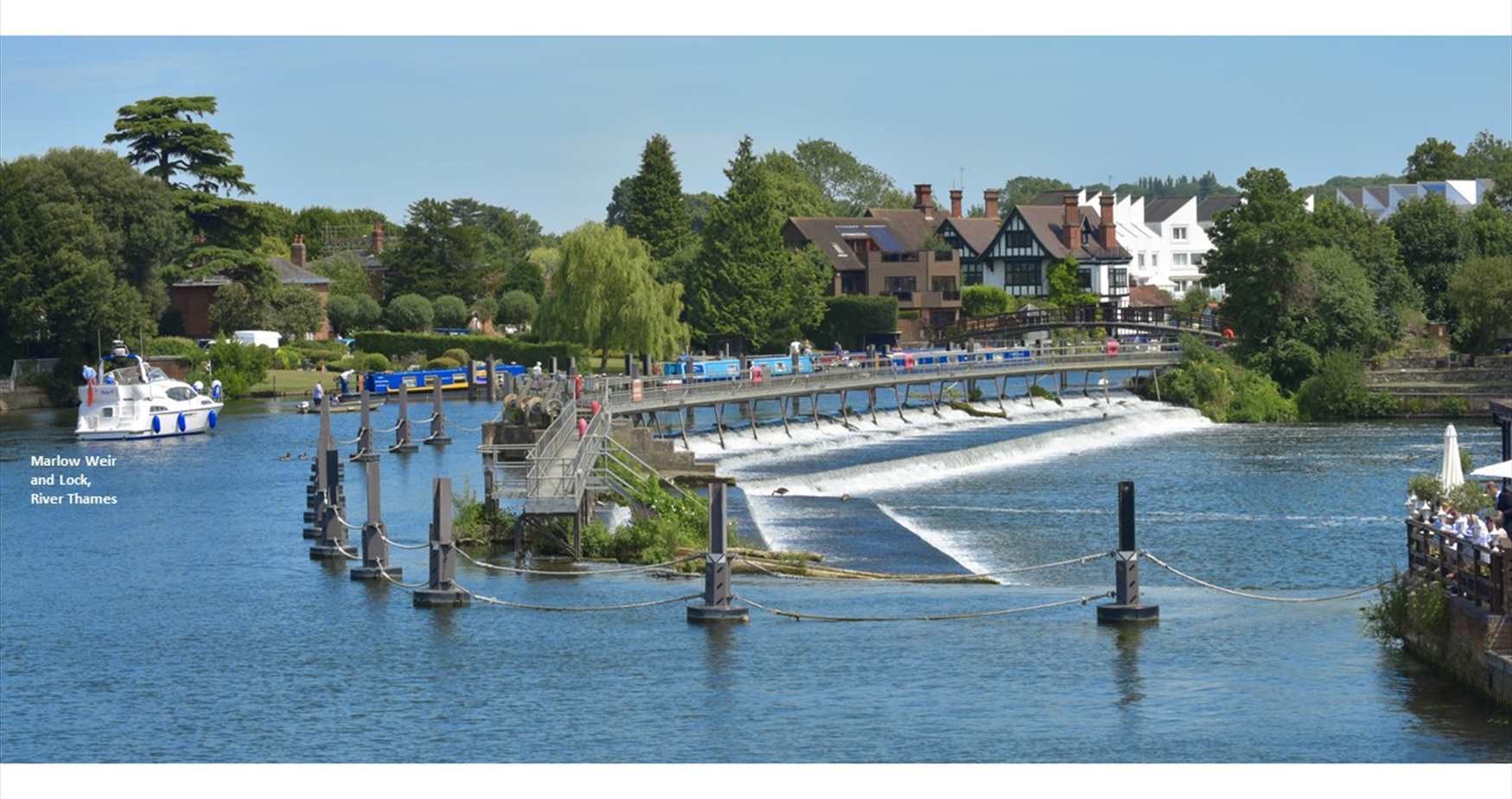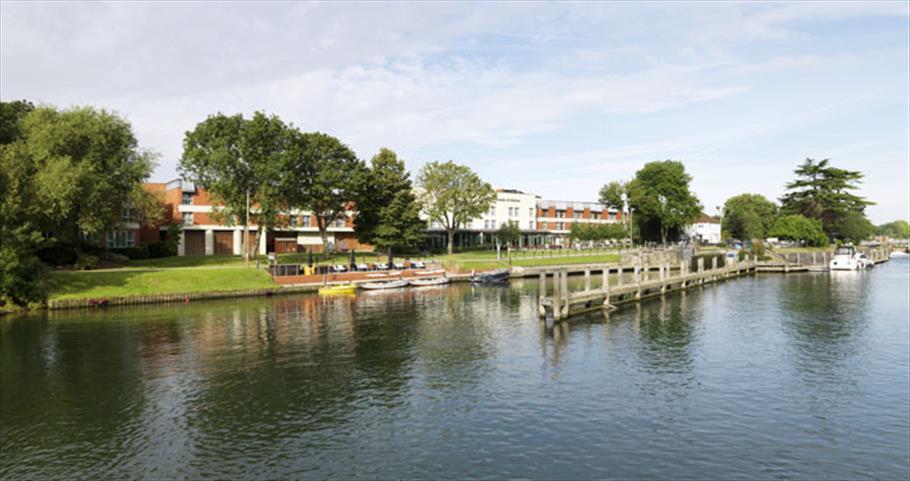You are here: About the River > River Thames Locks > Hambleden Lock
Hambleden Lock on the River Thames
Hambleden was the site of a mill in 1086 when the Domesday Book was being written. It is possible that a flash lock existed on the river here at the time. A pound lock, with heavy wooden manual beams, was built in 1773.
Caleb Gould, the lock keeper from 1777, lies buried in nearby Remenham churchyard. He died aged 91, and his epitaph on his grave stone reads, 'This world's a jest, and all things show it; I thought so once, but now I know it'. Old Caleb baked bread and sold it to the Thames bargemen and remains of the old bread ovens were discovered in 1975.
Literary Links
In 1869 Hambleden Lock featured in Charles Dickens' short ghost story "The Phantom of Regatta Island".
Thames Path Walk - Bourne End to Henley
This part of the Thames path heads through open fields from Bourne End to the beautiful town of Marlow. The path leaves the riverside briefly as it goes through Marlow, returning to the river under Marlow bridge. Beyond Marlow, the Thames path passes through the villages of Temple, Hurley and briefly leaves the river at Aston. Returning the river, the Thames path goes past Hambleden Lock, with it's large weir, then round through Remenham to the beautiful town of Henley-on-Thames, home of the famous regatta.

Beyond Frogmill the Thames Path is peaceful and pleasant, and fairly undeveloped. You pass over a couple of small footbridges near Lower Culham Farm, where the path leaves the rivers edge briefly. Soon you come to the imposing Culham Court, dating from 1771. The Thames Path climbs away from the edge of the river here, through the edge of the gardens, giving lovely views of the Thames and the hills beyond.
Continue along the path to the small village of Aston (not in Birmingham!), with its hotel, pub and houses. You join the road at Aston Lane, turn right onto the lane and continue, down Aston Ferry Lane to rejoin the Thames. Shortly after rejoining the Thames you come to another lock, this time known as Hambleden Lock. The beautiful Hambleden Mill across the river has been converted into flats. The many bridges over the lock and weir are open to the public, and you can really appreciate the power of the water by crossing these bridges.
The Artist

The painting above, of Hambleden Lock is by Nestor Cambier (1879–1957). He was a Belgian artist and draftsman whose portraits were compared favourably with those of John Singer Sargent but who now is largely forgotten. He also painted landscapes, city and interior views, still-lives, murals and stained glass, and also produced numerous pencil and chalk drawings. He spent 19 years intermittently in the United Kingdom (1914–1933),and in 1923, he became a member of the North British Academy of Arts. This period was notable in that he became a resident guest of Sir Henry and Lady Barber at Culham Court, near Henley, Oxfordshire. During this time, he painted numerous portraits of different kinds of Lady Barber (1869–1932), as well as pictures of the interior of Culham Court and the surrounding countryside. (Wikipedia).
The image has been supplied by Ebelien and Noud Koevoets of The Netherlands.
During the summer months, Salters Steamers scheduled public cruises may stop here certain days of the week to pick-up or drop off. You do not need to pre-book. However, please check the schedule on the website to see if and when there is a service.
Did you know?
The first Oxford and Cambridge University boat race was rowed in 1829 between Hambleden Lock and Henley Bridge. Oxford won in a time of 14 minutes 30 seconds.
Contact details
Telephone:+44 (0)3708 506 506
Postcode: RG9 3AZ
Find out more about the Hambleden Lock facilities.
.png)






